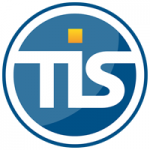The size and shape of your treasury team
| 09-11-2017 | Pieter de Kiewit |
 Last week I received a call from one of my clients. Over the last years, I found several members for their team. Given the transition they are in, they were looking for benchmark information to shape their treasury team and make it future proof. This has kept me thinking and I started gathering information in order to give a proper answer. As to be expected, there is no standard template resulting in an easy answer. Even for more evolved job types like sales or accounting this is a hard question, corporate treasury is too young and small for sound statistics.
Last week I received a call from one of my clients. Over the last years, I found several members for their team. Given the transition they are in, they were looking for benchmark information to shape their treasury team and make it future proof. This has kept me thinking and I started gathering information in order to give a proper answer. As to be expected, there is no standard template resulting in an easy answer. Even for more evolved job types like sales or accounting this is a hard question, corporate treasury is too young and small for sound statistics.
To make my analysis workable, I decided to measure the size of the team in a straightforward headcount. When talking about shape, I would like to work with the main functional areas: cash management, risk management, corporate finance and support. Of course this is an oversimplification. I think the following variables are the most relevant.
To start with the obvious: size matters. Size in revenue, number of employees, number of countries active in, number of currencies used, number of payments are all related to size of the treasury team. Not 100%. Senior management requesting detailed and up-to-date information requires a bigger team. We see this especially with organizations in turbulent situations, internally or in dynamic markets. Treasury teams that recently started, do not yet have a focus on efficiency and tend to be bigger. The willingness to invest in modern IT solutions on one hand creates a bigger team: key users and treasury IT managers, on the other hand it replaces staff doing manual work. Finally improving aspects like segregation of duties and back-up typically create a bigger team.
Moving forward to the shape of the treasury team or perhaps the size of the various functional areas, I observe that the industry and company status have their impact. Typically, companies with a dynamic balance sheet, due to distress or growth (autonomous or take overs) need a bigger corporate finance function. A longer balance sheet in a capital intense industry requires a bigger team. In this area I also see an increase in project and customer finance teams contributing in the structuring of business deals.
Companies with diverse and dynamic payment flows need bigger cash management teams. Especially corporates with an ambition towards strong centralization require extra central staff. They need stronger software support, communicate a lot with subsidiaries and have to understand the business. If achieved, central cash management can be managed by few.
I observe a decrease of number of staff working in FX and interest risk management. Corporates are more risk averse, markets are transparent and ICT enables STP processes. In parallel other types of risk increase the workload: counter party, commodities, insurance, etcetera. Big data and business modeling is having its impact.
This blog does not have the ambition to be comprehensive, the above could be more thorough. Furthermore I could elaborate on aspects like control, IT and especially back office and settlements. Should they even be in your treasury team? I think the topic deserves further attention and could be researched by more than one graduate student.
What are your thoughts? What obvious aspect should be included? I look forward to your reactions,
Pieter de Kiewit

Pieter de Kiewit
Owner Treasurer Search


 One of my friends who works in human capital development and is a psychologist, explained me once how we can increase our creative output. One of the elements he mentioned was mixing up the way information comes to you and how you digest it. For example, if you are used to create business plans sitting behind your desk and writing, a multi-person brainstorm session might tap into your undiscovered creative potential. And the other way around: if you are talker/listener, try writing for a change.
One of my friends who works in human capital development and is a psychologist, explained me once how we can increase our creative output. One of the elements he mentioned was mixing up the way information comes to you and how you digest it. For example, if you are used to create business plans sitting behind your desk and writing, a multi-person brainstorm session might tap into your undiscovered creative potential. And the other way around: if you are talker/listener, try writing for a change. In July 2016 our expert Pieter de Kiewit wrote an
In July 2016 our expert Pieter de Kiewit wrote an 



 Het blijft een terugkerend thema als meerdere treasurers samenkomen of als ik over loopbaanplanning spreek: is blijven in treasury een recept voor vastlopen in je carrière? Bouw je door op hetgeen je hebt bereikt of doe je een stap terug/opzij om er weer twee vooruit te maken? Zonder uitputtend te willen zijn zal ik veel genoemde reacties beschrijven.
Het blijft een terugkerend thema als meerdere treasurers samenkomen of als ik over loopbaanplanning spreek: is blijven in treasury een recept voor vastlopen in je carrière? Bouw je door op hetgeen je hebt bereikt of doe je een stap terug/opzij om er weer twee vooruit te maken? Zonder uitputtend te willen zijn zal ik veel genoemde reacties beschrijven.
 The holiday season is finally here! While relaxing on the beach in Ibiza or making new memories in Bali, take some time to think about your career. Wait, what? Yes, do some thinking about your career between cocktails and sunbathing. Maybe it’s time to take your career to the next level by freshen up your knowledge or learning something new. treasuryXL has collected some of the education programs that take place in September.
The holiday season is finally here! While relaxing on the beach in Ibiza or making new memories in Bali, take some time to think about your career. Wait, what? Yes, do some thinking about your career between cocktails and sunbathing. Maybe it’s time to take your career to the next level by freshen up your knowledge or learning something new. treasuryXL has collected some of the education programs that take place in September. Stephanie Derkse – Community Manager treasuryXL
Stephanie Derkse – Community Manager treasuryXL An increasing number of bankers come to my recruitment desk wanting to make a transfer to corporate treasury. This transfer can be made successfully but there are a number of things to take into account. Below the 8 career hurdles, I hear most about, in a transfer from banking to corporate treasury.
An increasing number of bankers come to my recruitment desk wanting to make a transfer to corporate treasury. This transfer can be made successfully but there are a number of things to take into account. Below the 8 career hurdles, I hear most about, in a transfer from banking to corporate treasury. 